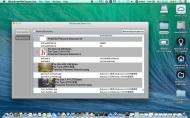

- #Base64anywhere how to
- #Base64anywhere for mac
- #Base64anywhere mac os x
- #Base64anywhere password
- #Base64anywhere mac
(2) Apps that have an dedicated uninstaller: Head to the /Applications folder in Finder. Hold down the app icon until all the icons begin to jiggle, then click the delete button that appears in the upper left corner of the icon, and click Delete again in the pop-up dialog to execute the uninstallation. (1) Apps downloaded from the App Store: Click the Launchpad icon in the Dock, and search for the app in Launchpad interface.
#Base64anywhere mac
When uninstalling antivirus/security or malware software, the better option is to reboot your Mac into Safe Mode to prevent automatic launch, and then perform the uninstallation.Īdditionally, if Base64Anywhere 8 comes with a built-in uninstaller, or it was installed via the Mac App Store, there is an alternative way you can take to perform the uninstallation. To find out and kill related background process(es), you can run Activity Monitor (located in /Applications/Utilities folder) instead. To quit an app, the common way is to right click app icon on the Dock and choose Quit option. Why I cannot delete Base64Anywhere 8? Being prompted that “The item Base64Anywhere 8 can’t be moved to the Trash because it’s open”? This message occurs because Base64Anywhere 8 (or its background process) is still running. This act is irrevocable so you must do it with caution. Note that the moment you empty the Trash, the app will be permanently removed from your Mac.
#Base64anywhere password
During the process, you may be prompted to enter an administrator’s password to make the deletion take effect. Or choose right click Trash icon, choose Empty Trash, and Empty Trash again in the pop-up dialog.īesides, you also can trash the app from the Launchpad interface.


#Base64anywhere mac os x
Most Mac apps are self-contained, and the trash-to-delete option works on all versions of Mac OS X and later. Question 1: How can I uninstall Base64Anywhere 8 from my Mac? So, when you decide to uninstall Base64Anywhere 8 on Mac, you will need to tackle the following two questions. The trash-to-delete method may leave some junk files behind, resulting in incomplete uninstall. That means, if you simply trash the app and think the removal is done, you’re wrong. Additionally, some apps may create supporting files, caches, login files scattering around the system directory. General knowledge: Once installed, an app is typically stored in the /Applications directory, and the user preferences for how the app is configured are stored in ~/Library/Preferences directory.
#Base64anywhere how to
If you have no clue how to do it right, or have difficulty in getting rid of Base64Anywhere 8, the removal solutions provided in the post could be helpful. This page is about how to properly and thoroughly uninstall Base64Anywhere 8 from Mac. Removing applications on Mac is pretty straightforward for experienced users yet may be unfamiliar to newbies.
#Base64anywhere for mac
* When decoding Base64 images, the data will be recognized as an image and instead of seeing the decoded bytes, an image will be displayed.Perfect Solutions to Uninstall Base64Anywhere 8 for Mac This is very handy for reverse engineering Base64 encoded data structures. * When decoding Base64 encoded data, binary data will be shown in Hex, with the option of revealing printable characters. * Encode or Decode text inline if you application supports it (text editors, programming IDE's, etc) or you can send the text to the Base64 interface where it will be displayed with its encoded and unencoded representations. * Base64 encodes whole files (including JPGs/PNGs/etc) with a single click from finder, and easily formats base64 encoded images for inclusion in CSS or web pages. Wherever you see a file or text that needs encoding or decoding, you can simply select and right click to perform the operation you need. There are many Base64 encoders/decoders, but Base64Anywhere is about allowing you do your encoding or decoding contextually. Base64Anywhere is a OSX service and application that allows you to encode files from a right click context menu in Finder, as well as allowing you to encode text as Base64 or decode from Base64 with a right click from IDE's, text editor's, terminals, etc.


 0 kommentar(er)
0 kommentar(er)
